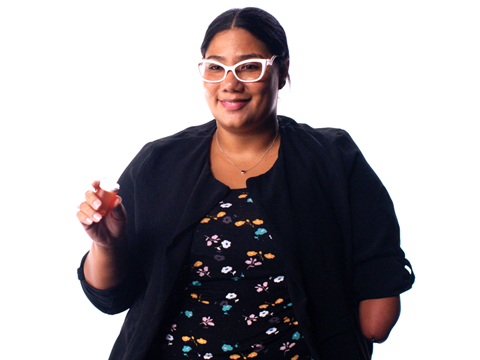
In a move expected to benefit adult consumers with physical disabilities, SnapSlide has revealed a line of no-torque caps that enable single-handed opening and closing without sacrificing child resistance.
The company explains that it has geared the line towards the 60 million American consumers with dexterity issues like arthritis, fibromyalgia, multiple sclerosis, and Parkinson’s disease. Within this figure, 12 million people are temporarily or permanently unable to use one of their arms or hands, including amputees, stroke or paralysis patients, and individuals born with congenital birth defects.
In all these cases, conventional closures can be difficult to open – especially in the pharmaceutical sector, with security and child safety measures often hindering a pack’s accessibility.
As such, the patented cap closure technology features a slide-to-open, slide-to-close functionality. Compared to conventional push-and-turn solutions, it is said to require less force and dexterity to operate.
When opened, the cap itself stayed fixed to the vials, which is thought to increase safety and convenience while facilitating easy, metered dosing. A 57-decibel ‘snap’ sound is produced by the closure system as an auditory cue, signalling to consumers when a medicine bottle is securely closed.
Yet the company goes on to suggest that SnapSlide is also popular amongst consumers without dexterity issues. According to its focus groups, almost 90% of consumers preferred SnapSlide to traditional amber vial closures; and two-thirds claimed they would show preferential treatment to a brand utilizing SnapSlide, whether that meant staying loyal to a compliant brand or switching from a competitor that did not embrace the new caps.
Other highlighted features include the low profile of the closure, which is thought to halve the storage space needed for traditional child-resistance closures and enhance both storage and shipping efficiencies.
Furthermore, the caps claim to be 27% lighter than conventional child-resistant solutions. SnapSlide says that they lead to a reduction in overall plastic use but remain at a similar price to other cap closures on the market, nor are they thought to require significant adjustments to downstream production processes.
Apparently, the solution is suitable for oral solid dose over-the-counter (OTC) applications and adaptable to various commonly-utilized containers, including plastic and glass bottles that require child resistance.
Later this year, a consumer awareness campaign is set to advertise SnapSlide to the general public and non-profit groups in the disability space.
“The SnapSlide prescription vial caps have the potential to be better for all and life-changing for many,” said Rocky Batzel, inventor and CEO of SnapSlide, LLC. “For consumers with physical limitations, the cap provides convenience, accessibility, safety, and independence. For retail chains, it has the potential to transform child-resistant packaging from an undifferentiated commodity into a competitive advantage.”
On World Braille Day back in January, Steven Brownett-Gale, marketing lead at Origin, walked us through the importance of accessibility in pharmaceutical packaging design. He outlined the industry’s current efforts to optimize its designs for visually impaired consumers, ranging from tactile features to the implementation of smart packaging.
Another redesign intended for consumers with physical disabilities resulted in the customizable PS5 controller kit from PlayStation arriving in packaging designed to be openable with one hand. Said to have been developed alongside accessibility experts, the pack features loops that can be pulled from the left or right side to slide the product out of its packaging.
In other news, Aptar Closures recently unveiled an e-commerce-capable locking disc top closure for beauty, personal care, and home care applications; it is said to be fully recyclable when paired with a PE or PET bottle.
If you liked this story, you might also enjoy:
The Brief: How viable is biorecycling for plastics?
Report: How the top brands are progressing on packaging sustainability
The Brief: Using ocean-bound plastic in packaging – how, why and should we?


















No comments yet